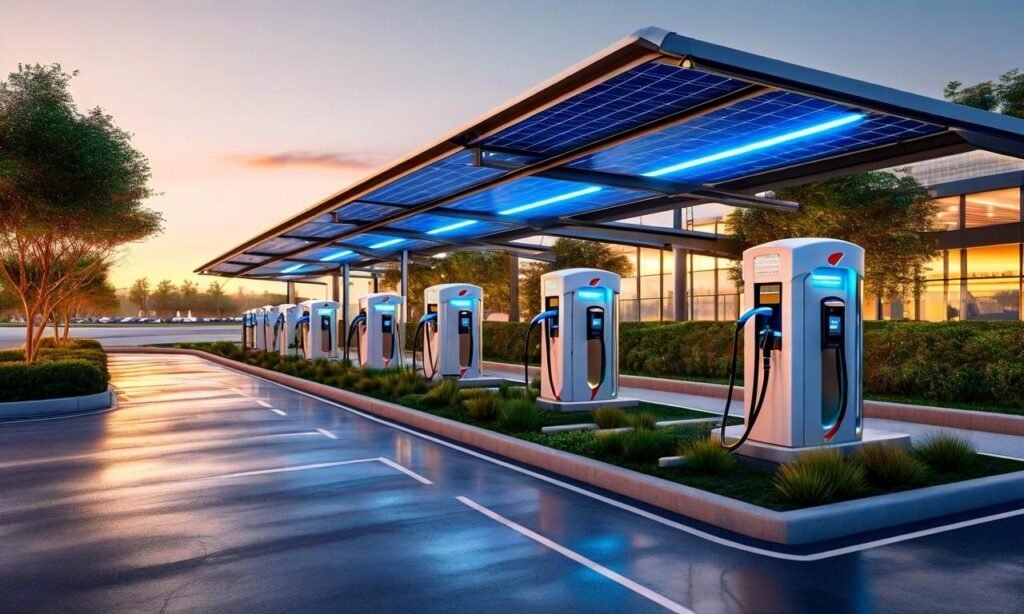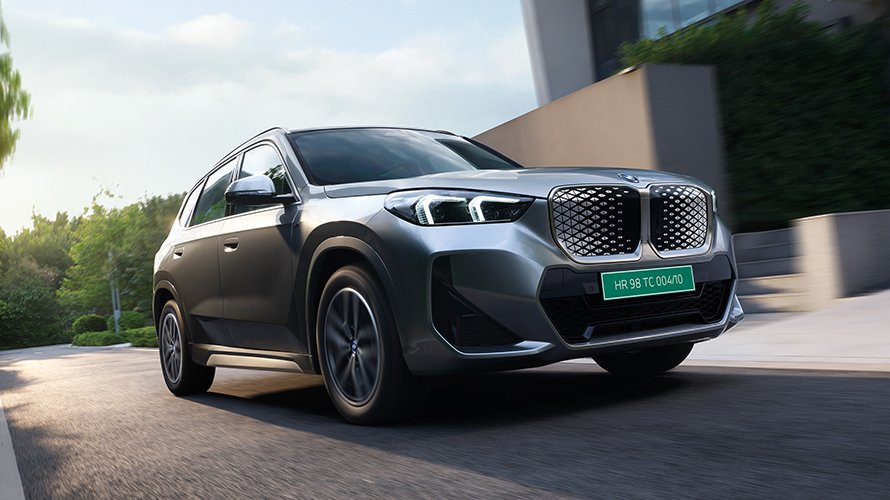BENGALURU: In a significant step toward bolstering India’s electric vehicle (EV) ecosystem, Tata Power, in partnership with Tata Passenger Electric Mobility Ltd. (TPEML), inaugurated Mumbai’s first premium, large-scale EV charging hub on Tuesday, September 9, 2025—coinciding with World EV Day. Located near Terminal 2 of the Chhatrapati Shivaji Maharaj International Airport in the premises of The Leela Mumbai Hotel, this TATA.ev MegaCharger hub features eight fast DC chargers with speeds up to 120 kW, offering 16 charging bays to accommodate simultaneous charging for up to 16 vehicles.The facility, strategically positioned in the bustling Andheri-Bandra Kurla Complex (BKC)-South Mumbai corridor, aims to reduce wait times for private car owners, taxis, ride-hailing fleets, and logistics operators, while catering to tourists and business travelers.
This hub adds to Tata Power’s extensive network of over 1,000 green charging points already deployed across Mumbai, contributing to its nationwide footprint of more than 5,500 public and captive chargers, 1.4 lakh home chargers, and over 1,200 bus charging facilities spanning 630+ cities. Powered by renewable energy and operating 24/7, the MegaCharger aligns with Tata’s vision of seamless, accessible clean mobility, with exclusive benefits like up to 25% discounts and priority access for TATA.ev customers.
he inauguration, led by Dr. Praveer Sinha, CEO & MD of Tata Power, and Shailesh Chandra, MD of Tata Motors Passenger Vehicles Ltd. & TPEML, underscores the companies’ long-standing collaboration in scaling EV infrastructure. “This co-branded mega EV charging hub is designed to serve the city’s diverse mix of EV users,” Sinha remarked, emphasizing its role in eliminating peak-hour queues and enhancing user experience. Chandra echoed this, calling it “a significant milestone in our mission to grow widespread, fast, and reliable charging infrastructure in India.
India’s EV Charging Boom: Infrastructure on the Rise
India’s EV sector is accelerating rapidly, with sales surpassing 100,000 units in FY25 alone, driven by launches from major players like Tata, Mahindra, Hyundai, and MG. The government’s FAME-III scheme and targets for 30% EV penetration by 2030 have spurred investments in charging networks. Tata Power’s expansion is a prime example: The company aims for 7.5 lakh home chargers and 10,000 public points by 2030, focusing on highways, airports, malls, and residential areas.
The Mumbai hub’s dual-gun chargers enable faster top-ups—potentially adding 100-150 km of range in 15-20 minutes for compatible EVs—making it ideal for high-traffic zones like airports.Similar initiatives, such as Tata’s earlier MegaChargers in Delhi and Bengaluru, have already reduced downtime for fleet operators by up to 40%, according to industry estimates.
The Manpower Crunch: A Hidden Roadblock
However, as infrastructure expands at breakneck speed, a critical bottleneck emerges: the shortage of skilled manpower to operate and maintain these stations. A recent whitepaper titled “EV Charging in India: Ecosystem Perspectives and Skilling Opportunities,” released by The Energy and Resources Institute (TERI) and Mercedes-Benz Research and Development India (MBRDI) at the Mercedes-Benz Sustainability Dialogue India 2025, warns that India will require between 1 lakh and 2 lakh trained professionals by 2030 to manage the burgeoning charging ecosystem.
The report, based on consultations with 150 experts across the EV value chain, identifies charge point operators (CPOs) as the “backbone” of this transition. Nearly 50% of skill needs revolve around installation and testing of charging infrastructure, alongside IoT-enabled digital applications, fault troubleshooting, service quality optimization, and smart grid integration. Yet, key barriers persist:
Lack of Hands-On Training: Most programs are theoretical, leaving operators unprepared for real-world scenarios like handling high-voltage systems or cybersecurity threats.
Non-Standardized Modules: Absence of uniform curricula across Industrial Training Institutes (ITIs) and vocational programs leads to inconsistent skill levels.
Shortage of Qualified Trainers: There’s a dearth of experts versed in both technical (e.g., power electronics, renewable integration) and operational aspects (e.g., consumer safety protocols).
In tier-2 and tier-3 cities, the gap is even wider, with technicians often lacking exposure to quality standards, soft skills, or basic tools. Without addressing these, the whitepaper cautions, EV adoption could stall, as unreliable charging erodes consumer trust.
| Key Skill Areas for CPOs | Estimated Demand Share | Challenges |
|---|---|---|
| Installation & Testing | 50% | Limited practical exposure |
| IoT & Digital Apps | 20% | Non-standardized training |
| Troubleshooting & Maintenance | 15% | Shortage of trainers |
| Smart Grid & Service Optimization | 15% | Cybersecurity knowledge gaps |
(Data adapted from TERI-MBRDI whitepaper)
Bridging the Gap: Initiatives and the Road Ahead
To counter these challenges, MBRDI and TERI have launched the “Future-In-Charge” program under Mercedes-Benz’s Sustainability Garage, focusing on hands-on training in electrical engineering, power electronics, and renewable integration.Manu Saale, MD & CEO of MBRDI, emphasized, “Sustainability is about people… This initiative tackles systemic barriers for holistic change in the EV skilling landscape.” Vibha Dhawan, TERI’s Director General, added, “Building a skilled workforce is crucial for clean mobility; Future-In-Charge bridges industry needs with youth talent.”
Industry players like Kazam have trained over 500 technicians in smaller cities, highlighting the eagerness to upskill. Experts like Kunal Khattar from Advant Edge note that staggered infrastructure rollout provides time for training, leveraging skills from adjacent sectors like telecom and renewables. Government interventions, such as integrating EV modules into ITI curricula and subsidies for training under Skill India, could accelerate progress.
For Tata Power’s new hub, this means investing in on-site training to ensure smooth operations. As Chandra noted, scaling such facilities nationwide requires “empowering EV owners” through reliable service—impossible without a robust talent pool.
Conclusion: Powering Ahead with People at the Helm
The Mumbai MegaCharger hub exemplifies India’s EV infrastructure ambitions, making clean mobility more accessible in one of the world’s busiest metros. Yet, the TERI-MBRDI whitepaper serves as a timely reminder: Technology alone won’t suffice; a skilled workforce is the true enabler. By prioritizing standardized, hands-on skilling, stakeholders can turn the projected 1-2 lakh job demand into an opportunity for inclusive growth. As Tata Power eyes 10,000 public chargers by 2030, the focus must shift from building stations to building capabilities—ensuring India’s EV revolution charges forward without missing a beat.



